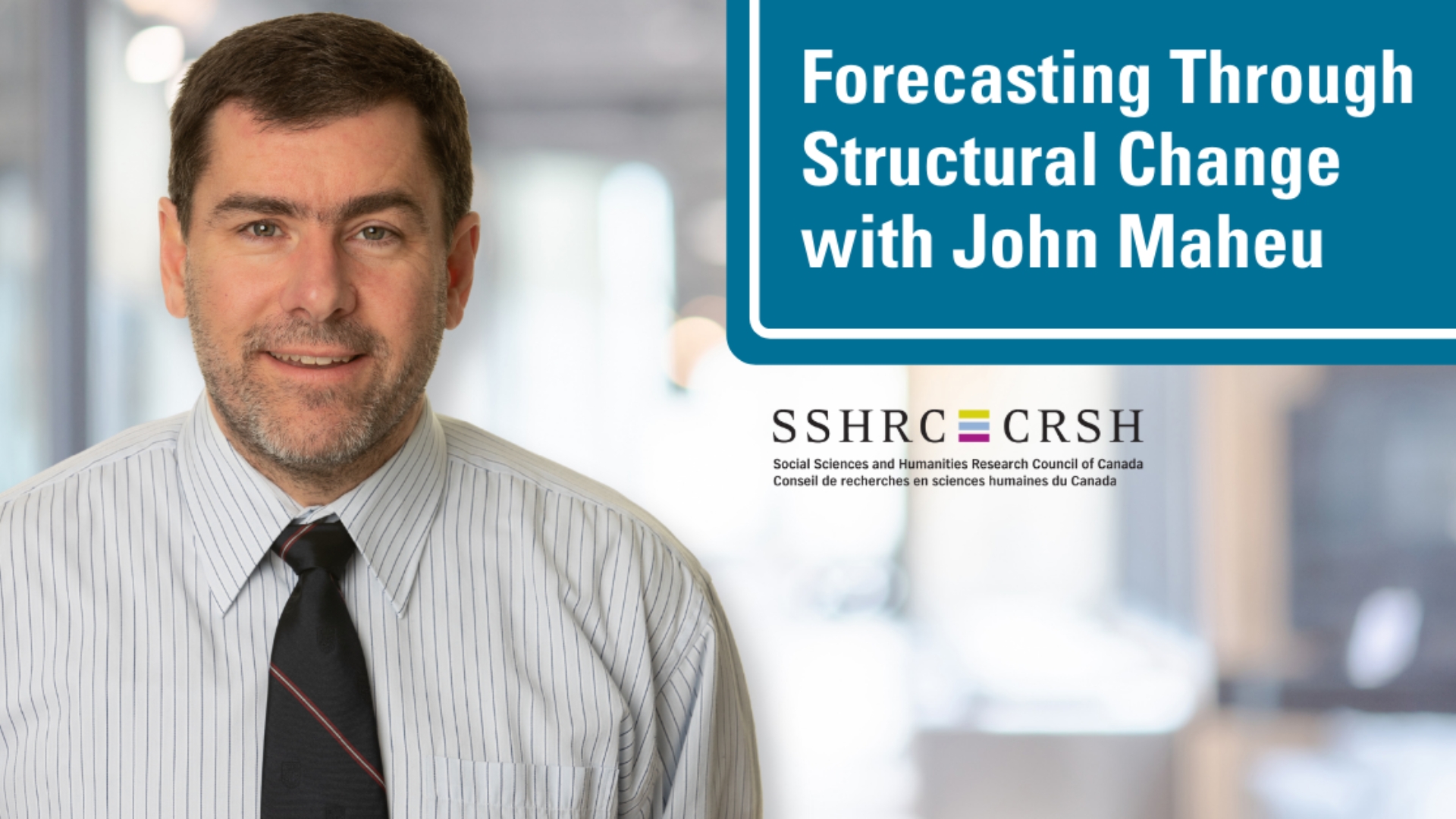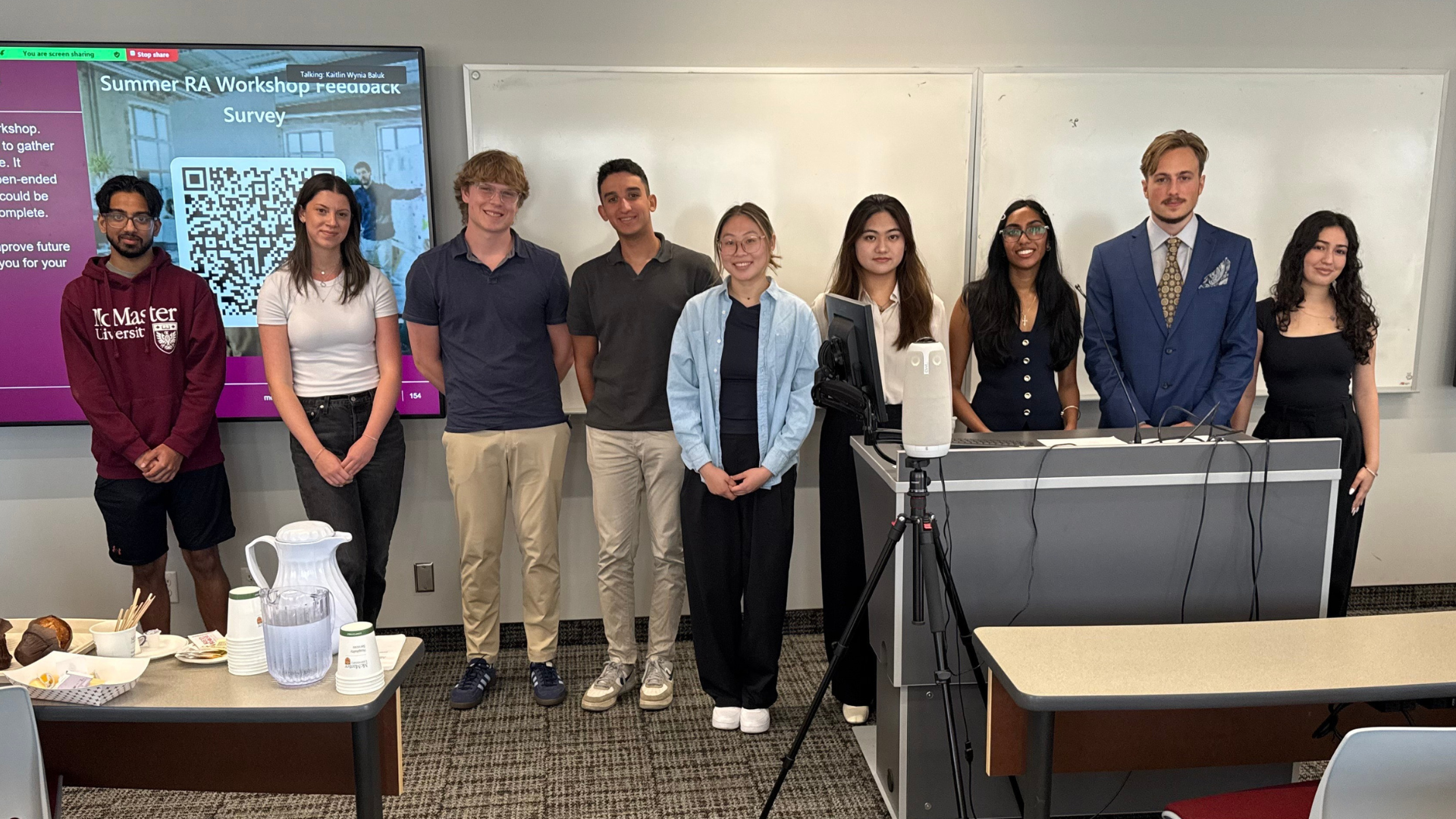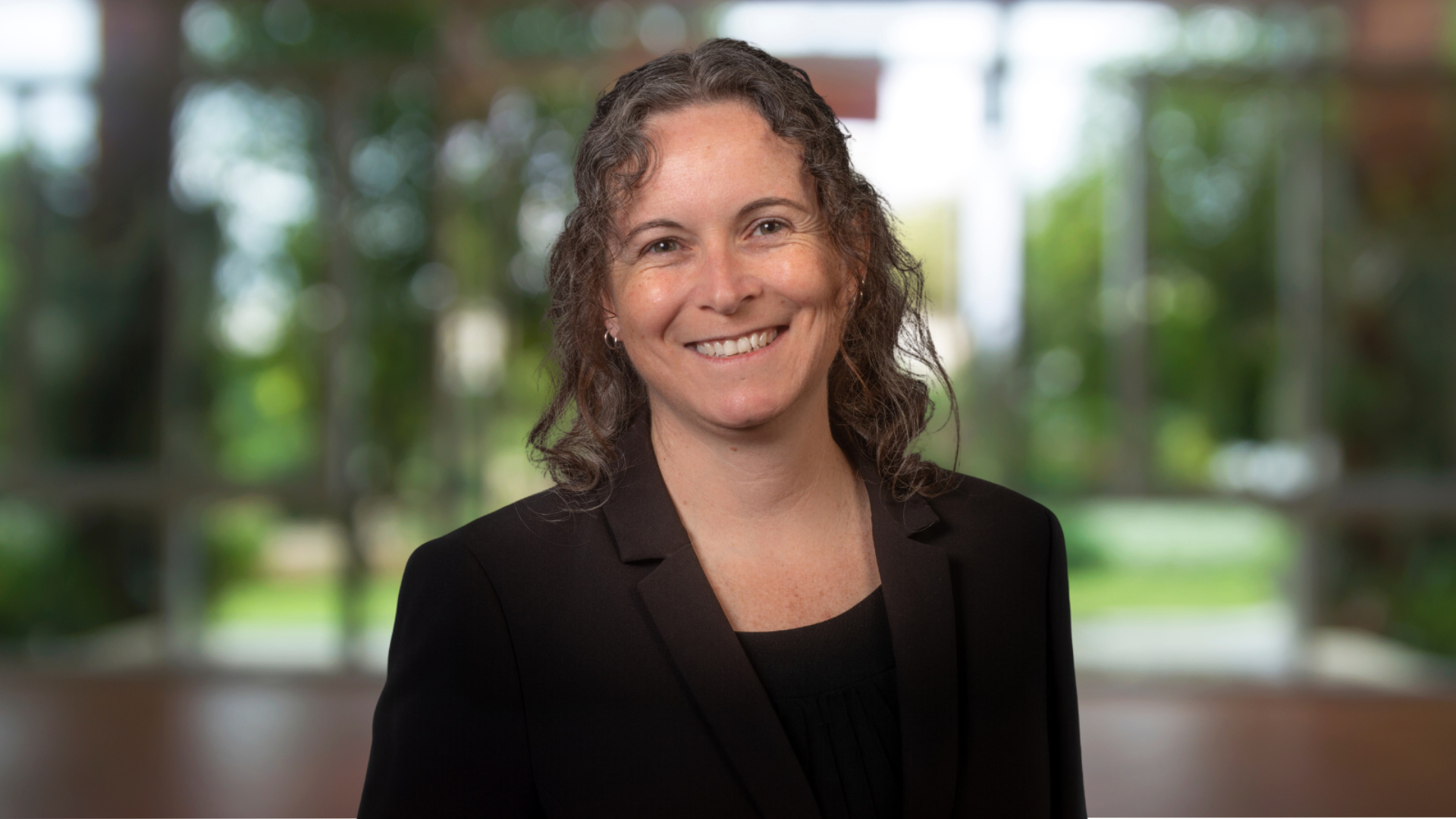FINANCE AND BUSINESS ECONOMICS
John Maheu Uses Forecasting to Inform Financial Decisions
November 16, 2021 ·
Contributed by: Izabela Szydlo, DeGroote Writer

When you decide which route will get you to work the fastest and avoid traffic problems, you’re making a forecast. When you consider the amount of groceries you need for the coming week, and how that might change if someone is visiting, you’re making a forecast. Almost all our decisions involve thinking about the future and involve forecasting. The same is true for financial decisions — typically with much higher stakes than if you underestimate how much milk you’ll drink in seven days.
McMaster Finance and Business Economics professor John Maheu’s research focuses on helping society to make more informed financial decisions. He does this by designing and implementing new econometric modelling methods to improve forecasts of economic and financial data. What makes Maheu’s research particularly unique is that unlike most econometricians (who forecast future trends using only historical data), many of his models contain flexibility that allows the future to be like the past but also leave room for the world to change.
“Ultimately, I’d like to improve decisions for society and to help people avoid losses,” says Maheu, a recipient of the Social Sciences and Humanities Research Council (SSHRC) grant, which supports long-term research initiatives that are central to advancing knowledge, addressing complex issues pertaining to individuals and societies, and to furthering collective understanding.
I think forecasts are vitally important to all of our decisions today.”
Forecasting in the Stock Market
One of Maheu’s current projects involves modelling and predicting bull and bear markets (upward and downward price movements in stocks) during COVID-19. His most recent work did this for the S&P500 (a stock market index tracking the performance of 500 large companies listed on stock exchanges in the United States). Maheu is now working on extending this to bull and bear markets, modelling many assets simultaneously. He says there may be considerable benefits to using disaggregated data (data from multiple variables or sources) to model stock market phases.
“People often think about bull and bear markets — when to buy, when to sell — and if you could provide better estimates of the risk they would be bearing, that is valuable,” says Maheu. “So, for example, in the last COVID period, some people wanted to get out of the market completely. They thought the world was changing, and it wasn’t going to go back to the way it was. My models allow us to get an assessment of that, to characterize the risk and reward, and really to signal when it is a good time to invest in the market. Using disaggregated data allows you to get a better, sharper estimate, giving you the ability to time the bull and bear cycles more accurately and make better decisions.”
Structural Change through COVID
In fact, because much of Maheu’s work is tied together by forecasting asset returns, interest rates, and macroeconomic variables into the future — with flexible modelling of unknown distribution and allowing for change over time — COVID has become especially useful for this modelling approach.
When an event like COVID moves us into a state we have never been in historically, this is called a structural break. Through one of his projects, Maheu is seeking to answer questions such as: How do we learn if a structural break has occurred? How do we forecast into the future when past data is not useful in learning about the future?
“I have a methodology that deals with how we use new data to learn about a structural change that’s occurred” he explains. “What do we do with the old data? Do we throw it out or do we average it? How do we use it in a sophisticated manner to make good decisions? And another issue is, moving forward will COVID, these restrictions, continue to have an impact on economic variables, or are we going to go back to pre-COVID? Those are vitally important questions if you’re forecasting.”
While most people may not associate math and statistics with creativity, Maheu says that as he works to extract information from data to help society make better decisions, it is also a form of creative expression.
“It’s fun to be creative and see if these things work and how effective they are,” he says.
[dsb_author_profiles]















